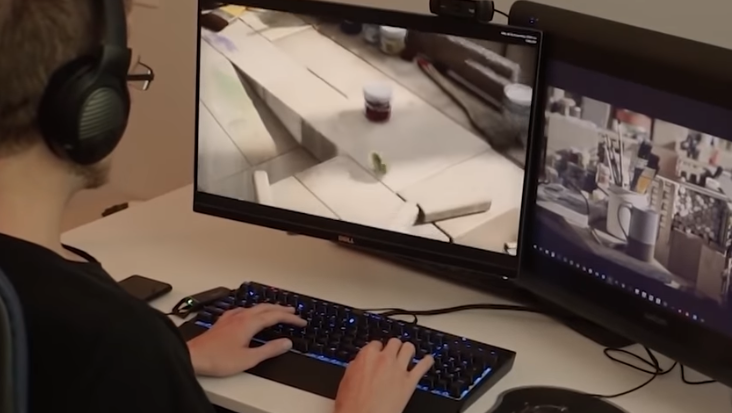
This article by our CEO, Jerod Venema, was originally published by VentureBeat: “Why Nvidia’s bottom-up approach to the metaverse will win.”
As Big Tech places more resources and funding in the metaverse, the most significant metaverse investment will be in empowering people to create in it. Nvidia kicked off 2022 with an announcement: It will be granting free licenses for its Omniverse software to artists and other creatives, who will help build virtual worlds for the metaverse. These licenses (which cost at least $9,000annually for corporate customers) will be offered not to arts organizations but to individual creators. They’re not being given away as charity, though; they’re an investment in the bottom-up, grassroots growth of the Metaverse.
The brilliance of this move by Nvidia is its widescale empowerment of content producers. It’s a welcome contrast to the “control all the data” approach inherent to Facebook/Meta. Everything Facebook does is inside a closed experience controlled by its engineers and admins.
In taking the opposite approach, Nvidia shows that it grasps the free spirit and creative energy that will help existing virtual worlds blossom into a connected and open metaverse. Nvidia’s graphics processing units (GPUs) already dominate in gaming and 3D simulation, setting the company up as a key player in the metaverse. If it is also successful in making Omniverse the dominant software platform for creating and sharing 3D designs inside a connected Metaverse, its valuation will skyrocket.
Empowering individual creators, as Nvidia is doing, is essential to the metaverse’s success. Here’s why:
Timberwolves, toy poodles, and the right approach to the Metaverse
Would you rather be a timberwolf or a toy poodle?
The timberwolf is the apex predator of its habitat—it goes where it wants, eats what it wants, and all other animals respect it. But it can only thrive as long as it can sustain itself in its habitat.
In contrast, the toy poodle lives a kept life. Completely dependent on its owner to carry it around and feed it, the toy poodle has essentially no agency or power. However, it usually wants for nothing and always outlives the timberwolf.
Most of us are going to pick the timberwolf, because the idea of living a comfortable but captivated life sounds stifling. The artists, engineers and other creators whose work will make or break the metaverse are the same way—they want to be empowered to do creative work the way they see fit.
Nvidia’s grassroots approach treats creatives like timberwolves, providing them the habitat and tools they need to create, thrive, and make a living. In contrast, the top-down control of companies like Meta treats creatives like toy poodles who need to be supervised inside a closed environment. They monitor the everyday transactions of users to mine their data, and prevent creatives from coloring outside the lines or making money outside of an approved digital economy.
The Metaverse will make or break based on creative buy-in
It’s difficult to imagine what our world would be like without the work of artists and creatives. The latest plot developments on hit TV shows like “Succession” and “Game of Thrones” dominate our conversations. Designers influence everything from our fashion choices to how we decorate our homes. Musicians compose the tunes we hear in the background as we work, socialize, and relax.
So much of what it means to be human comes from art in all its forms. For the metaverse to take off as a true cultural phenomenon, we need visionary artists and creatives to fill it with real culture. That means empowering these creatives to make all kinds of content for virtual environments, from NFTs to music to livestreaming shows, and ensuring they’re fairly compensated for their work.
This is why Nvidia’s Omniverse software license giveaway to artists is such a big deal. Nvidia understands unleashing creative energy to make products and experiences in the metaverse is what will make it exciting and attractive to consumers. New arrivals in these virtual worlds will seek creative and artistic experiences that can’t be found anywhere else. Besides making the metaverse a more lively and engaging place to spend time, this will also be crucial to establishing the commercial viability of any new virtual world.
And it’s not just artists who will benefit from this approach. As a longtime advocate for the open-source community, I can attest that the creative work of developers and software engineers will also be crucial to the success of the metaverse. By providing flexible tools without telling developers how they must use them, we can empower curious experts to experiment and iterate with what’s possible in livestreaming and virtual environments.
In short, no company should seek to own the metaverse; rather they should strive to open up all that’s possible within it. Let’s all embrace our inner timberwolves, boldly exploring all the metaverse can be.
